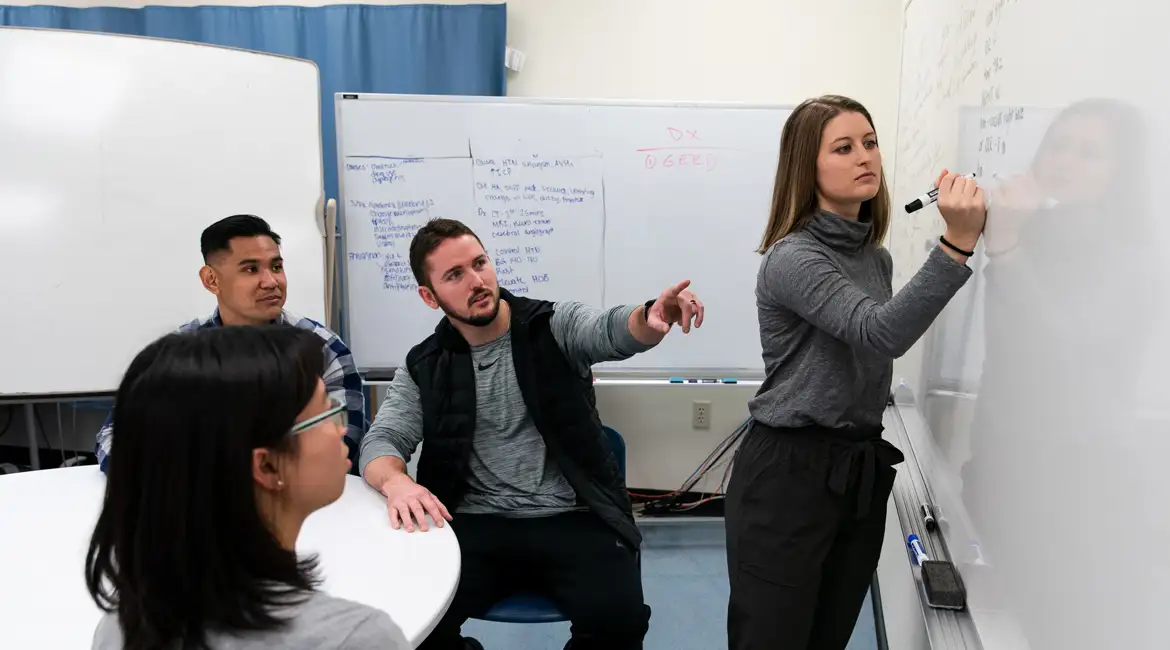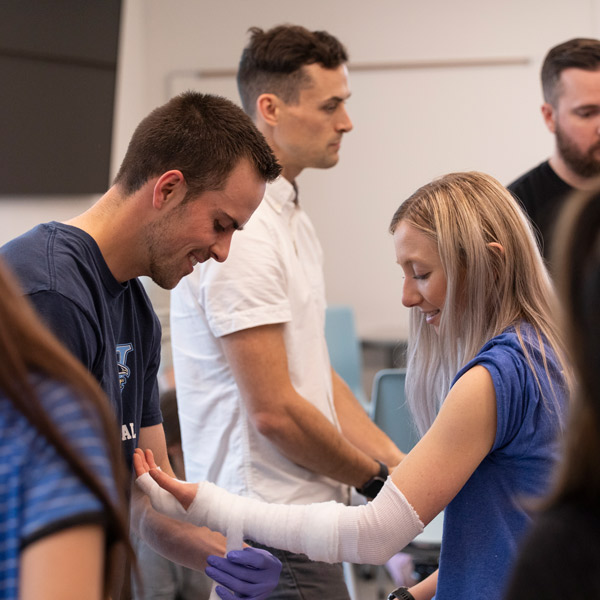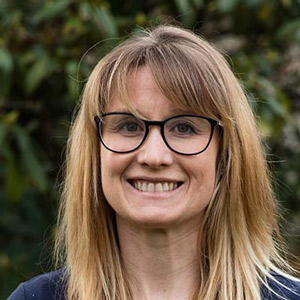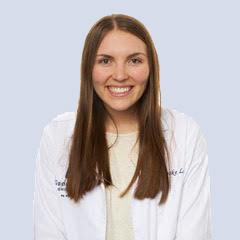
Problem-Based Learning
The George Fox University PA program uses problem-based learning (PBL) as the foundation of its approach to medical education. While the majority of PA programs use a traditional lecture-based format, the PBL approach creates a student-led learning environment where faculty act as facilitators in small groups.
This enables you to engage in self-directed learning using clinical cases to develop critical thinking skills and apply basic medical science knowledge to real scenarios.
A PBL-based curriculum requires a low student-to-faculty ratio to succeed, which is why our PA program’s ratio is just 6:1. This also makes it possible for us to deliver on the university’s Be Known promise that our students will be known personally, academically and spiritually.
A Unique Approach
Only 9% of PA training programs in the U.S. use PBL as their primary mode of instruction (Table 6, 2020), including George Fox. In contrast to traditional lecture-style approaches, problem-based learning allows you to develop critical thinking skills and knowledge integration early on, resulting in improved problem-solving, self-directed learning, and communication skills.

This, in turn, ensures that you enter clinical rotations equipped with the medical knowledge and clinical problem-solving competencies necessary to provide high-quality, patient-centered care.
Problem-based learning requires you to be ready to engage in active, self-led learning. You’ll be successful if you’re curious, hardworking and willing to adapt to new styles of learning.
What Does Problem-Based Learning Look Like?
Instead of passively attending a heart failure lecture, we’ll present you with a clinical scenario of a patient in a hospital emergency department with breathing difficulties and leg swelling. Working in one of several groups, you’ll identify possible causes and knowledge gaps, which you’ll address through research and learning. All of the groups will then reconvene to teach each other and move forward with the case.
This process continues over a week as you and your classmates learn as much as you can about 20 or more possible causes for the patient's symptoms through patient history, physical exam, labs and imaging, treatment, and patient education.
Along the way, you’ll hone your patient communication skills, learn to use patient-friendly language, and understand how location, access and social determinants of health may impact patient care and treatment approaches.
The program takes a holistic approach to ensure that every student develops skills in providing patient-centered medical care for all patient populations.
The Value of Problem-Based Learning
While a PBL-based approach to medical education tends to shift a lot of work to the front end of your education, the clinical problem-solving and self-directed learning skills you develop through the process are invaluable.

“I’m jealous of our students,” says Professor Michelle Rhea, PA-C, a faculty member who facilitates PBL groups. “I wish I had learned medicine this way. I did not feel prepared as I started my clinical rotations during my second year of training. I had the book knowledge, but the integration piece was missing, which made my first clinical rotations extremely challenging. Our students are much more prepared as they enter rotations; we have taught them about clinical problem-solving and knowledge integration since day one.”
Medicine requires lifelong learning because it is constantly changing, with new information and treatment approaches being developed continuously. PBL creates an environment that teaches you how to identify your knowledge gaps and research the most up-to-date treatment approaches for patients, allowing you to provide high-quality care throughout your career.

“PBL taught me to think like a provider,” says PA student Brooke Logue. “I learned clinical reasoning before I was in the clinic … it helped me grow in my curiosity and gave me tools to find information myself, which prepared me well for clinical rotations.”